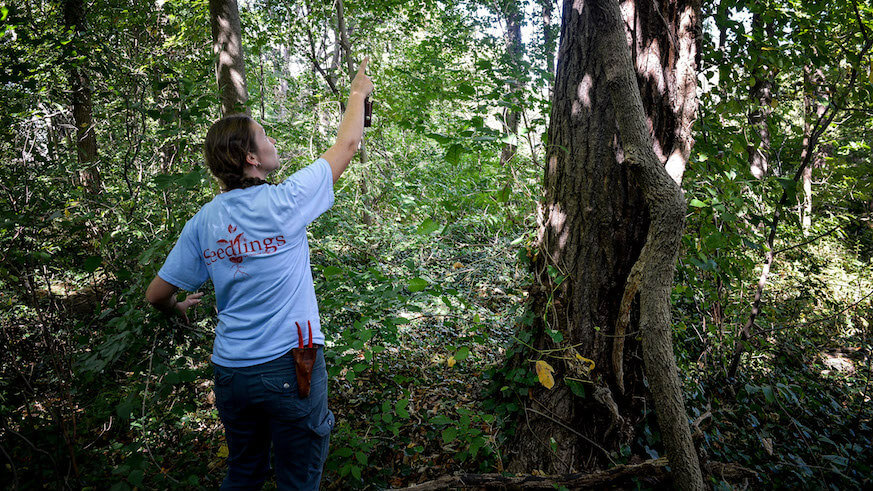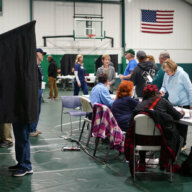There is a war going on around Philly, but one without guns or bombs. The enemy has been advancing for decades without public panic. And slowly but assuredly, they are winning.
The foe? English ivy, creeping vines and other invasive plants that are gradually asserting their dominion over local parks and green spaces by crushing plant diversity and eradicating native plants.
“It is definitely a massive problem, one that we’ve been addressing I’d say for the past 20 years,” Karen Flick, landscape manager at Awbury Arboretum in Germantown, said of English ivy, which can kill trees and is only one of the many invasives assaulting their 55 acres.
“We’ve started specifically training people to be able to come on their own to help remove the English ivy from the trees and keep it down,” Flick said. “While it seems like just a basic plant that everybody in Philadelphia sees within a block of themselves, it really does a whole lot of damage.”
Ivy and other woody vines grow by elevating themselves up along trees and producing berries. The vines over time suffocate a tree until it eventually collapses. They typically fall in the woods, but just a few years ago, a Germantown home’s back porch was smashed by an ivy-choked tree in the backyard.
“These vines climb trees, strangle them, girdle them, then make them so heavy, they pull them down when you get an ice storm,” said Dr. Douglas Tallamy, author of “Bringing Nature Home” and a professor at the University of Delaware. “They’re whittling away out beleaguered forests.”
Most people don’t think of invasives as a serious or urgent problem. After all, ivy and many other invasive, non-native plants, which originated countries from Asia to Europe, are still sold in gardening stores in Pennsylvania and are still planted, usually for aesthetic reasons. It’s just nature, right?
But Tallamy and others said they should be illegal, like in Oregon, where ivy was banned after overrunning local forests.
“It’s like buying a tumor, putting it in your body, and wondering why you get sick,” Tallamy said of planting invasives. “They can out-compete native plants, because they don’t have any of their natural enemies here, none of the diseases or insects that kept them controlled where they were.”
To Tallamy, an entomologist, invasives pose a catastrophic threat because of their ongoing effect on eons-old food webs. From reducing larvae populations to starving birds, they can literally destroy biodiversity and create a monoculture, he said.
For example, monarch butterflies exclusively eat milkweed, a native that invasives can eradicate. Other animals, like local deer, won’t eat ivy but still eat native plants, further tipping the competitive balance.
“These plants are not doing their ecological job in terms of supporting other life,” Tallamy said. “We have wide-scale food webs that are starting to collapse.”
In Philadelphia, numerous invasive plants are attacking the local ecosystem. Local officials are monitoring the problem, but can’t contain its growth.
“The average citizen doesn’t realize it’s a problem on a tree — it’s just a pretty green plant,” said Curtis Helms, project manager for Urban Forestry and Ecosystem Management at the Philadelphia Parks and Recreation department (PPR). “Philadelphia has been the nexus for a lot of plant introductions,” he said. “There’s no shortage of places where plants have been introduced for years and years and years, and nobody knew that when they escaped, they’d be very hard to control.”
If there is a solution to the invasives, Helms said, it will be in the form of “biological control” — finding a way to use other species or organisms to control the invasives.
“There is just no way we can keep up at the rate these plants are spreading. Just trying to keep them at bay, we’re doing the best we can,” he said. “In some places there is no next forest, it’s so overrun. You can see a canopy, it looks genuine, but every time a tree falls down, there’s no new tree seedling to replace it.”




























